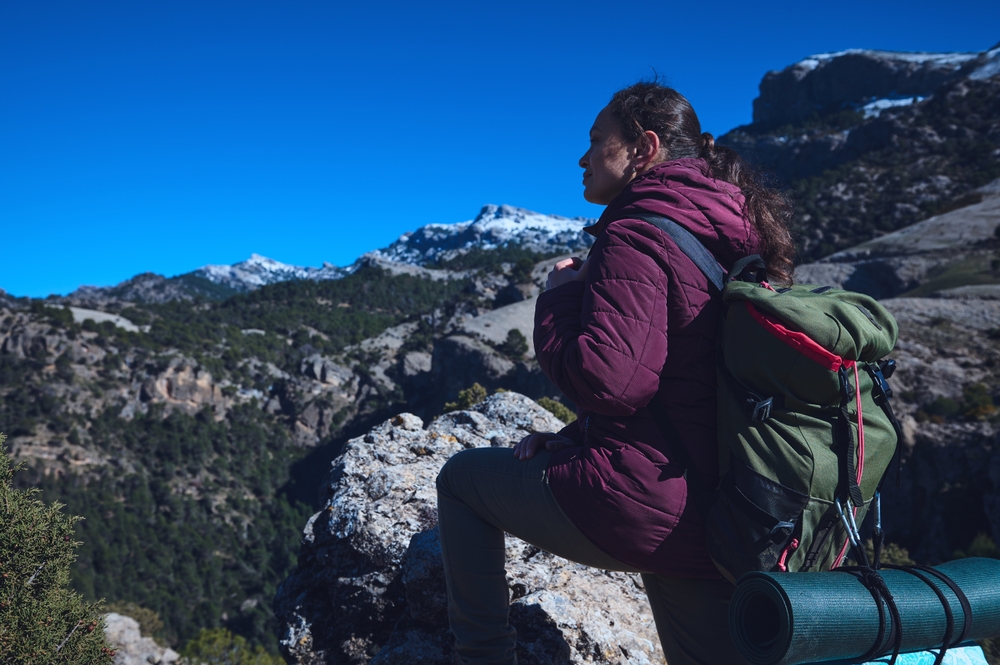Mountain adventures promise stunning views and unforgettable memories, but ascending to high elevations triggers profound changes throughout your body. Whether you’re trekking through Colorado, exploring Machu Picchu or venturing into the Himalayas, understanding these physical responses helps you stay safe and enjoy the journey.
Your body’s oxygen struggle begins immediately
At sea level, your body operates with abundant oxygen. As you climb higher, atmospheric pressure drops dramatically, meaning less oxygen enters your lungs with each breath. Your body senses this shortage instantly and launches into survival mode.
Your breathing automatically becomes faster and deeper as your system scrambles to maintain oxygen levels. Above 8,000 feet, many people notice these changes within hours of arrival. Even the fittest athletes find themselves winded by simple activities like climbing stairs or carrying luggage.
This isn’t weakness – it’s biology. Your body requires time to adjust to functioning with less fuel than it’s accustomed to receiving.
Heart and lungs work overtime
Your cardiovascular system shifts into overdrive at elevation. Your heart rate increases even while resting, pumping faster to circulate the limited oxygen throughout your body. Meanwhile, your lungs expand more fully, trying to extract every possible oxygen molecule from the thin air.
Key physical changes include:
- Elevated resting heart rate by 20-30%
- Increased breathing rate, especially during sleep
- Higher blood pressure in some individuals
- Reduced exercise capacity by up to 50%
These adaptations work, but they come at a cost. The extra effort can unmask hidden health issues like undiagnosed heart conditions or hypertension. Anyone with cardiovascular concerns should consult their doctor before traveling above 8,000 feet.
Brain function takes a hit
Your brain demands constant oxygen to function properly. When supplies drop, cognitive performance suffers noticeably. Many travelers experience pounding headaches, difficulty concentrating, dizziness and mental fog at elevation.
These symptoms appear even at moderate altitudes around 6,000-8,000 feet. Above 12,000 feet, the risks escalate dramatically. Fluid shifts can cause mild brain swelling, leading to serious conditions requiring immediate medical attention.
Warning signs of severe altitude effects on the brain include stumbling, slurred speech, confusion and personality changes. These symptoms demand immediate descent and medical care – they won’t improve with rest alone.
Digestive system disruption
High altitude affects more than breathing and thinking. Your digestive system often rebels against elevation changes, causing decreased appetite, nausea and sometimes vomiting during initial exposure.
These unpleasant effects stem from reduced oxygen availability, altered blood flow patterns and hormonal fluctuations. Your metabolism shifts priorities, diverting resources to more critical functions.
Smart eating strategies at altitude:
- Choose easily digestible carbohydrates over heavy proteins
- Eat smaller, more frequent meals
- Stay hydrated with water, not alcohol
- Avoid fatty or spicy foods initially
The acclimatization process explained
Given time, your body performs remarkable adaptations to altitude. Your system begins producing extra red blood cells to carry more oxygen. The kidneys release erythropoietin (EPO), triggering this increased production over days to weeks.
Successful acclimatization requires patience. Rushing the process invites altitude sickness and potential emergencies. Experienced mountaineers follow proven strategies like ascending gradually and sleeping at lower elevations than their daily high points.
Most people need 1-3 days to adjust to moderate elevations around 8,000-10,000 feet. Higher destinations require proportionally longer adaptation periods.
Recognizing dangerous altitude conditions
While mild discomfort is common, three serious conditions require immediate attention:
Acute Mountain Sickness (AMS) develops 6-24 hours after ascent, causing headaches, extreme fatigue, loss of appetite and nausea. Most cases improve with rest and hydration at the same elevation.
High-Altitude Pulmonary Edema (HAPE) involves fluid accumulation in the lungs, causing severe breathlessness even while resting, persistent coughing and pink frothy sputum. This condition can be fatal without prompt treatment.
High-Altitude Cerebral Edema (HACE) represents brain swelling that causes confusion, loss of coordination, severe headaches and potential coma. HACE constitutes a medical emergency requiring immediate descent and hospitalization.
Never ignore worsening symptoms or push through serious discomfort. Mountains will always be there – your health might not be if you make poor decisions.
Protecting yourself at elevation
Smart preparation prevents most altitude-related problems. Follow these proven strategies:
- Ascend gradually – Allow 2-3 days to reach elevations above 10,000 feet
- Hydrate constantly – Drink water regularly, avoiding alcohol and limiting caffeine
- Rest appropriately – Schedule easy days after arrival before attempting strenuous activities
- Monitor symptoms – Keep a written log of how you feel each day
- Consider medication – Acetazolamide can help some people acclimatize faster
Listen to your body above all else. Pride has no place in altitude safety. Descending when necessary shows wisdom, not weakness.
Living at altitude long-term
Millions of people thrive permanently at high elevations in places like La Paz, Bolivia, and Lhasa, Tibet. Their bodies develop enhanced adaptations including increased lung capacity, higher red blood cell counts and sometimes enlarged chest cavities.
However, chronic altitude exposure can cause problems. Some long-term residents develop chronic mountain sickness when their bodies produce excessive red blood cells, thickening blood and straining the heart.
Despite potential challenges, high-altitude populations demonstrate humanity’s remarkable ability to adapt. Their success comes from respecting the environment and understanding their bodies’ limits.
Embracing the mountain experience safely
High altitude presents real physiological challenges, but knowledge and preparation transform potential dangers into manageable risks. Understanding your body’s responses allows you to experience mountain majesty safely and confidently.
Respect the elevation, prepare thoroughly and listen to your body’s signals. The mountains offer incredible rewards for those who approach them wisely. Take time to acclimatize properly, and you’ll create memories that last a lifetime – while keeping all your brain cells intact to remember them.












